Where to start? Happy Valentine’s day perhaps? 
Departure Sydney would seem to be the prudent place, that was on our 11th of course and a beautiful ‘sail away’ it was too. We backed out of the berth, did a ‘wheelie’ in the harbour, adjacent to the Bridge and then progressed outwards down the harbour and channel.
It was quite windy and as a result, there were a large number of sailing yachts, their crews enjoying the conditions. Our ‘security’ launch ahead of us was ‘plowing the road’, warning off potential close-quarters situations. As it turned out, it wasn’t too fraught, most of the yacht skippers were sensible and kept away.
Out, past “The Heads’ and having disembarked our pilot, we set southerly courses, paralleling the Australian coastline, making for Melbourne.
Weather forecasts are simply that, forecasts; they sometimes do not take into account factors such as local conditions and this was one of them. Seas were meant to be moderate, (although one always encounters a swell in these southern seas), winds were meant to be moderate too. Not so for us and for most of Wednesday night and Thursday we were in a force-7 gale, rough seas and a big swell, particularly in the Tasman Sea. This is not entirely unsurprising, this area is known for its ‘weather’; the Southern Ocean storms further south can bring bad weather far north, as was the case this time.
Melbourne was a case in point and having sailed through 35-40 knot winds, there was a small respite for our arrival at the pilot, it had ‘eased’ to 25-30
At the uncivilised hour of 4 a.m. we approached the pilot station, I had been on the bridge for an hour, accustoming myself to the conditions. The time also gives one time to get into the ‘zone’; familiar with what is happening around us, weather, wind, other traffic, radio chatter etc.
Melbourne’s approach is one of the most difficult that we will encounter during our World Voyage. The city itself lies at the Head of a large bay and the pilotage is almost 50 miles; it will take us 4 hours to reach the berth.
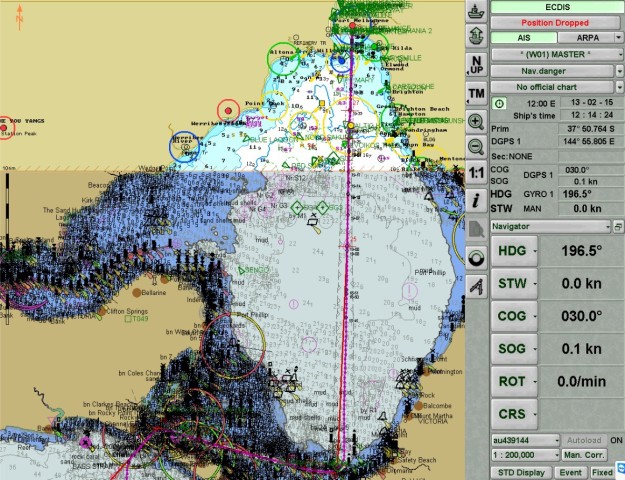
Overview of Melbourne. The entrance, through the Rip is bottom left, then the turn into the channel, across the Bay towards the city.
The entrance to the bay is through ‘The Rip’, a narrow entrance between 2 headlands, notorious for its tides, swirling current and standing waves in bad weather. During our meetings, we had gone through, again and again, what to expect, what tides were doing, what lights we should be seeing and where they should be. Once through The Rip, we have a 90º turn to starboard, into a narrow channel and then, 40 or so minutes later, a turn to port and into the main part of the bay. Here one has a respite for an hour or so, deeper water, no buoys and basically ‘open’ water. We then enter the northern channels, more buoys and beacons, a slower speed because of the shallow water and, eventually into the berth itself.
The pilot boarded 4 miles from the Rip, ample time for him to become acquainted with us and our methods (and for us to become acquainted with him). A long discussion about our passage plan for the transit and off we set, onto the leading lights for the Great Ship Channel, the centre (and deepest) of the choices to go through. Building speed, (speed is always your ‘friend’ in these wind and tide conditions), we made for the entrance, adjusting for the wind on our beam we were in effect ‘crabbing’ in. Through the Rip, the tide is with us and it carries us through and then the turn to starboard. We have a stabiliser out, for the turn has to be at high-speed, just to make it; once into the channel, the wind is coming from ahead and we can relax (metaphorically) for a while.
The ‘forecast’ is that the wind abates nearer the berth and fortunately, (for once), it came to be. Off the berth, a turn through 180° and astern to go alongside, right on time.
Karen and I took the opportunity to venture ashore, I haven’t had that much of an opportunity recently and so, camera in hand, off we went. Melbourne has a wonderful tram/train system, although the locals call it ‘trolley’. I use the term because the ‘trams’ run on rails, however they are more akin to a ‘tram’ or trolley. Once into the city, they have their own, dedicated lines and stop frequently, it is a marvellous system. Here are some photos of our journey.
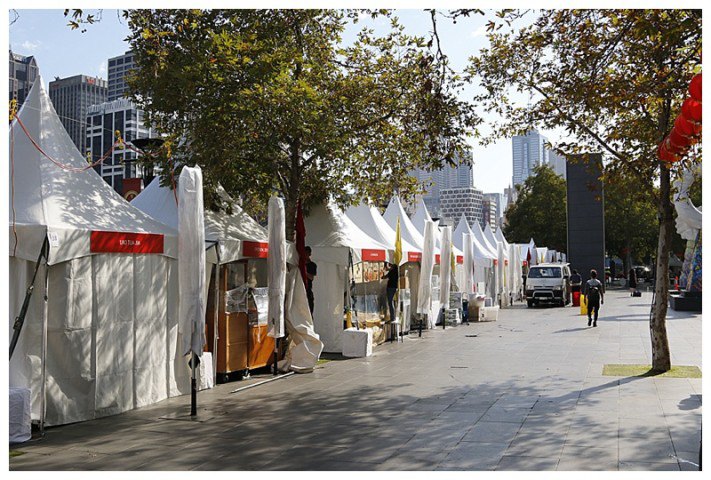
Stalls on the river bank, closed until 10 a.m., they are for Chinese New Year and sell Oriental goods.
I left Karen (and Colin and Paris) in town and made my way back to the ship early. I don’t know whether it was my 6th sense, or luck, however I am please I did so.
Sitting at my desk, I received a call from the bridge. I was told that the Port had called us, informing us of a high-wind warning, it was going to be in the lower reaches of the bay and shouldn’t affect us. I went to the bridge and, sure enough, black clouds were rolling in from the west, to the south of us. I watched for a while and then instructed Ineke, the Officer of the watch, to ask the Control room to give us an additional engine and having done so, give us our azipod propulsion and bow thrusts to the bridge.
Having done so, we watched and waited, to the south, lightning was streaking down to the water, rain thrashing it. Imperceptibly, the wind-waves near us began to appear and then, within seconds, wallop, 40 knots of wind hit us out of nowhere. Initially it was pushing us onto the berth, however it began to creep slowly towards our bow. Additional ropes were put out forward and the propulsion increased to keep us pinned alongside. To cut a long story short, for the next 2 hours we lay there, holding her alongside while the wind blew. Eventually it came around to our beam, effectively trying to push us off, however our precautions had been well founded.
It was still blowing when our outward-bound pilot boarded. He and I discussed the options, however, at the end of the day, the Master is responsible, even if there is a pilot and I elected to wait and see how the wind developed. Getting off the berth would not be a challenge, the wind would do that for me. The challenge was twofold, whether I could hold her alongside while we were letting go our lines and, if this were accomplished, whether I could get enough speed out of the dock so that we weren’t going sideways down the marked channel just ahead of us; the water did not have enough depth once out of the channel.
Watching the anemometer, gusting 30 knots and a lull before it would gust again, there came a time when, for a few minutes, it would stay around 20. Over to our west, another black cloud was rolling in, a portent of earlier winds, I had to go now or be stuck here.
Lines gone, there was no need to ‘help’ her off the pier, the wind was doing that. Control levers pushed forward, (I had informed the Chief Engineer I was going to do so), we shot out of the berth; a slight turn for the channel and within 4-ships lengths we were doing 8 knots, by the channel 11. The pilot remarked that if he hadn’t seen it with own eyes, he wouldn’t have believed it. The God’s were looking down on us, for having negotiated the narrower channel, that ‘black cloud’ I wrote about earlier became driving rain and 42 knot winds. The timing of our departure could not have been better.
After an otherwise uneventful passage out, we disembarked our pilot at 9:10 p.m and are now under sunny skies and a southerly swell making for Adelaide tomorrow, the 15th. It promises to be hot, 30°C or 86°F.
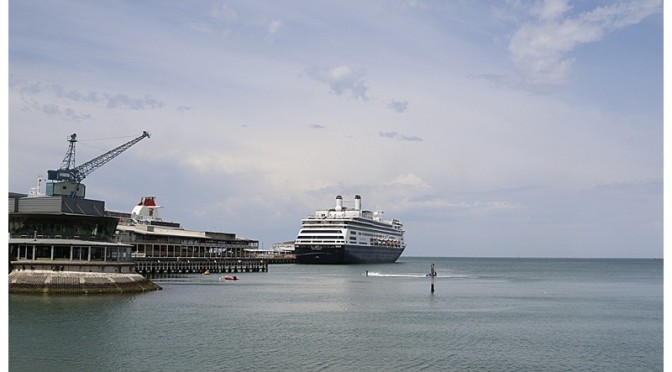
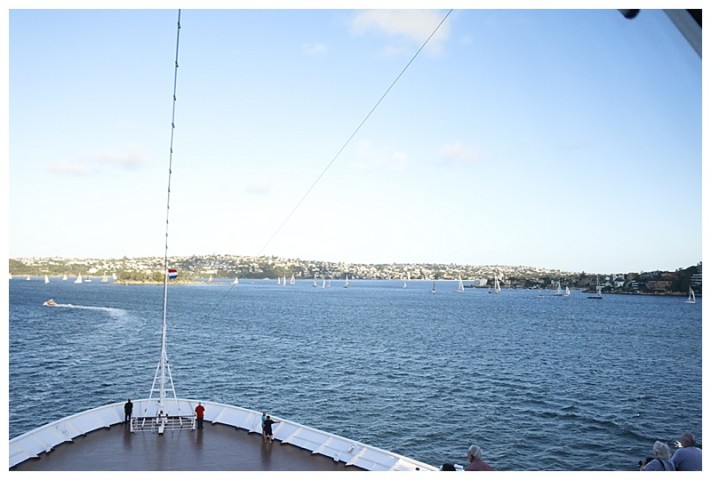
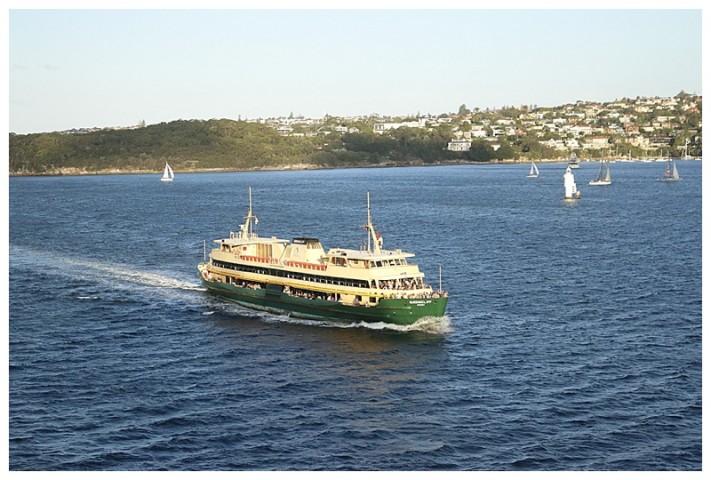
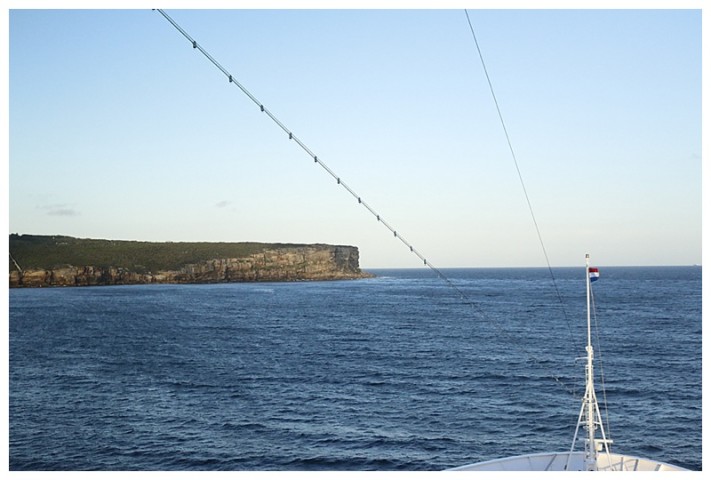
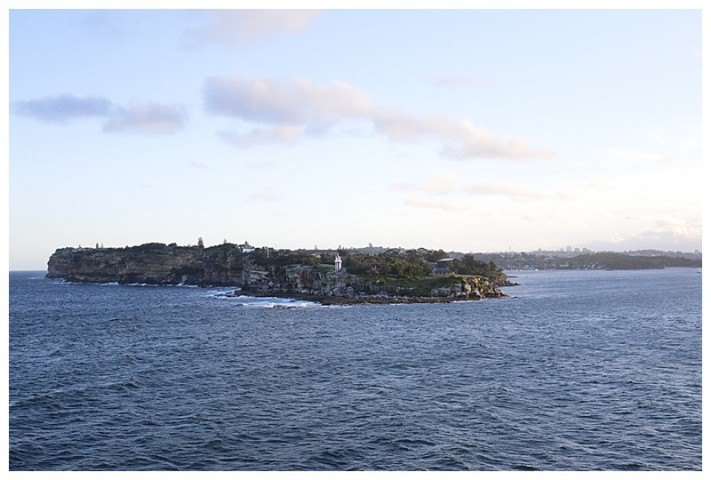
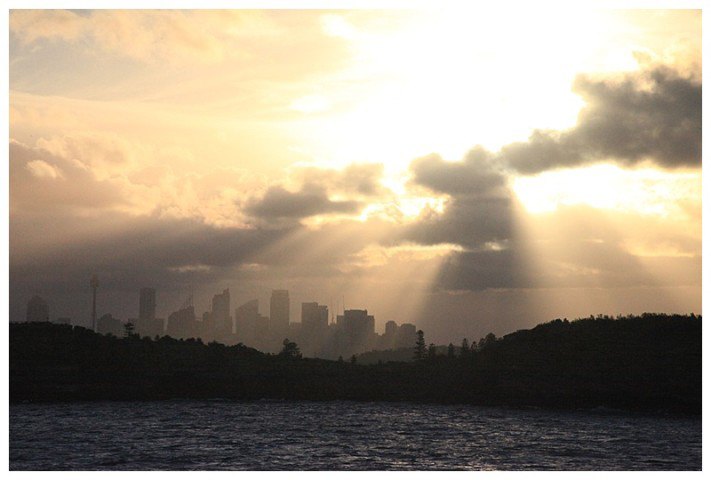

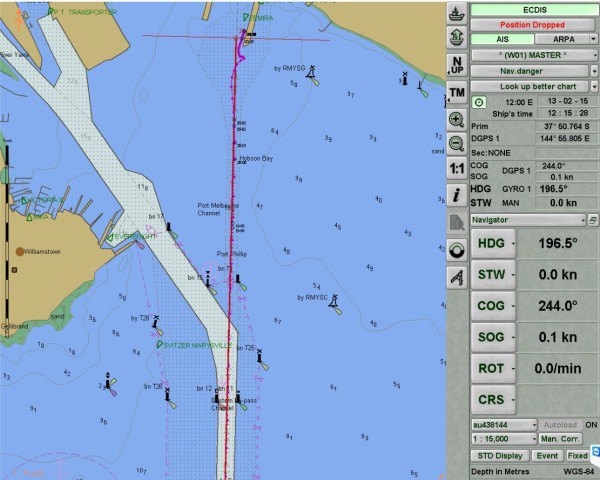
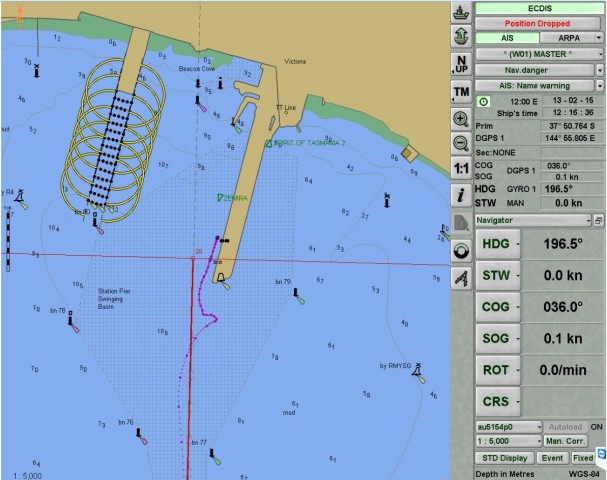
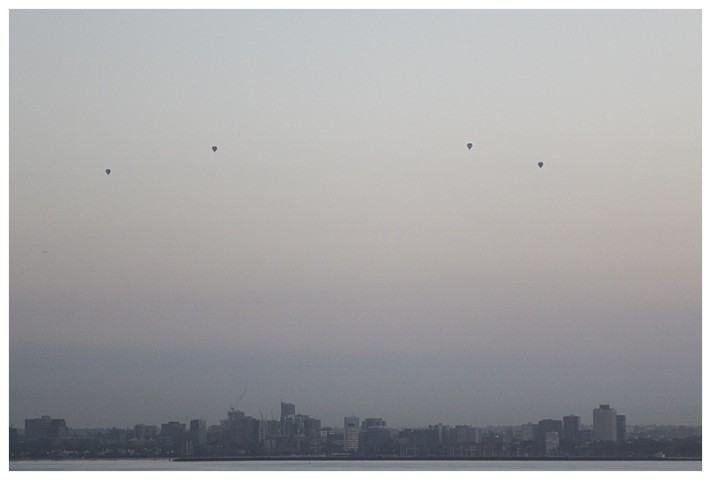
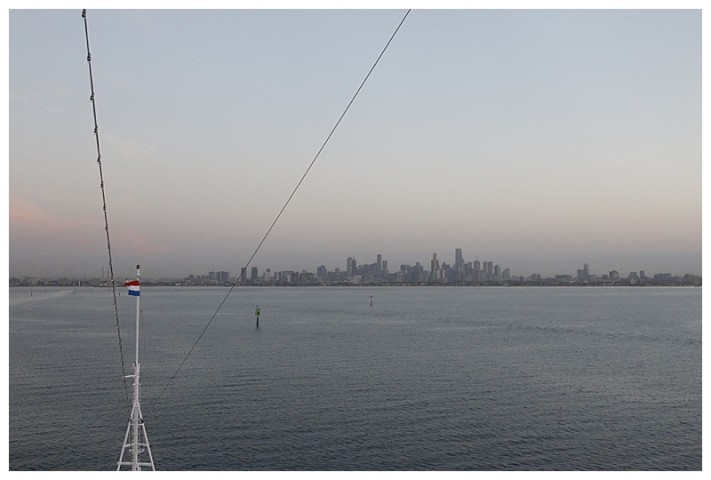
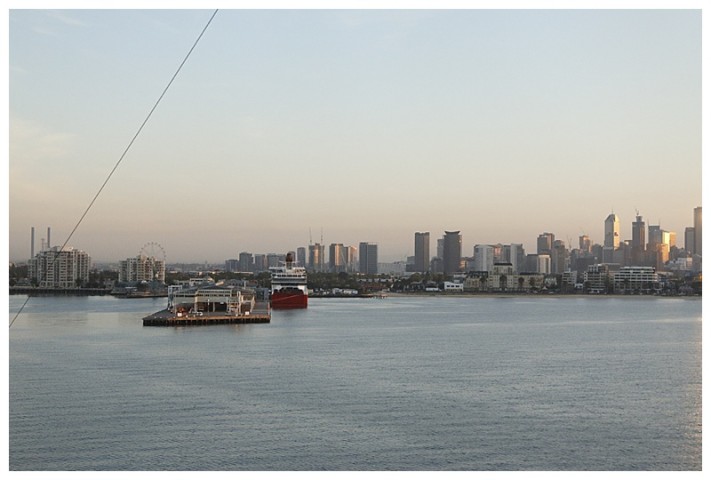
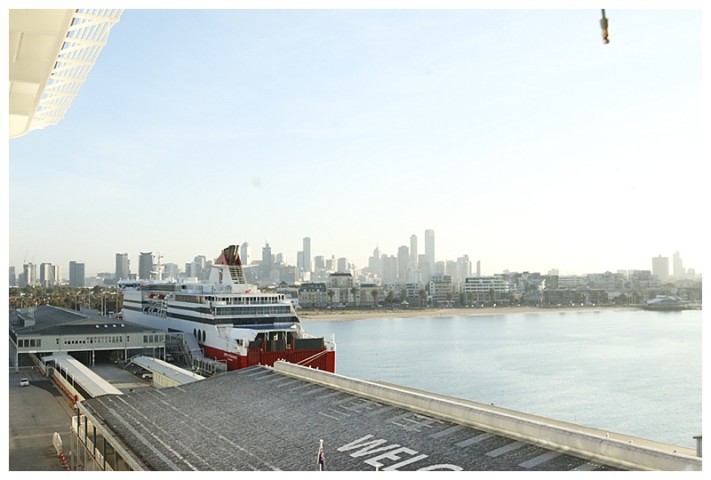
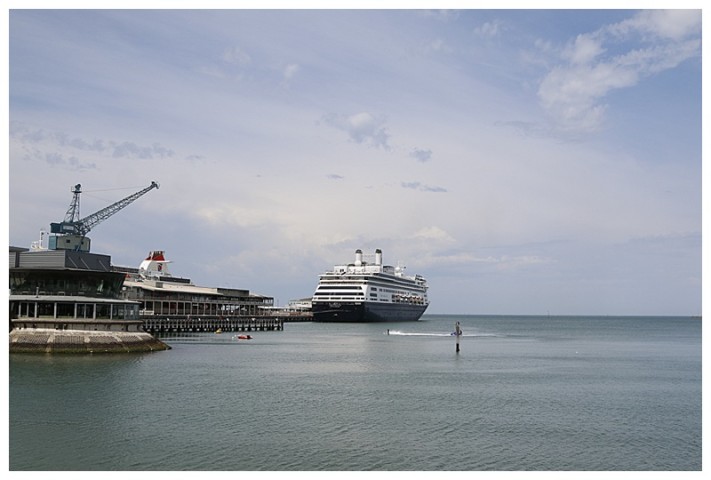
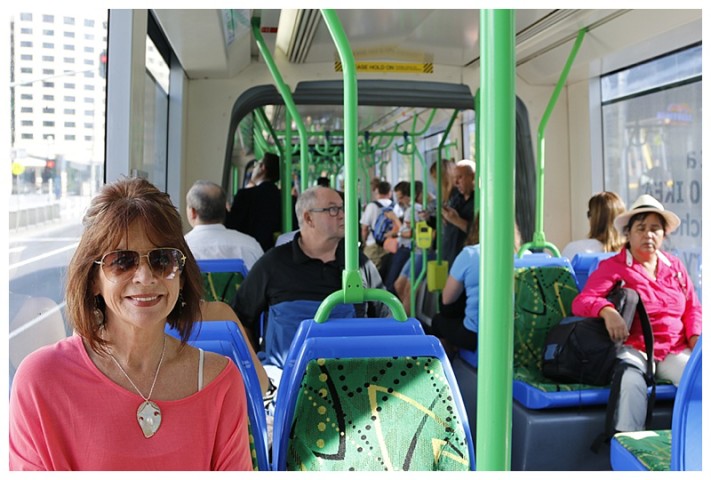
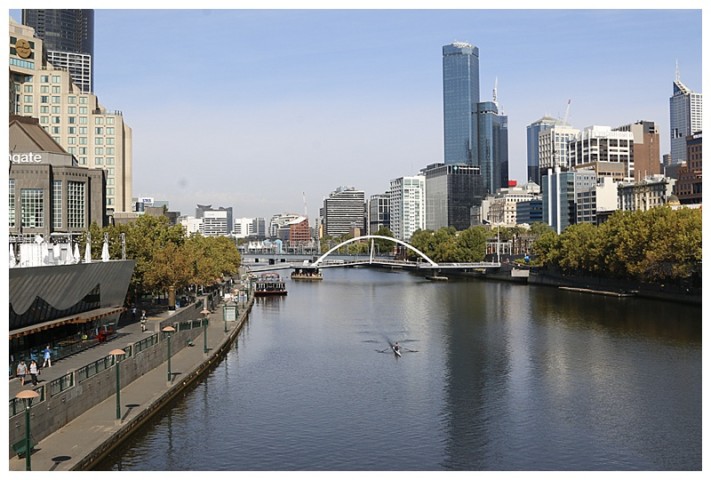
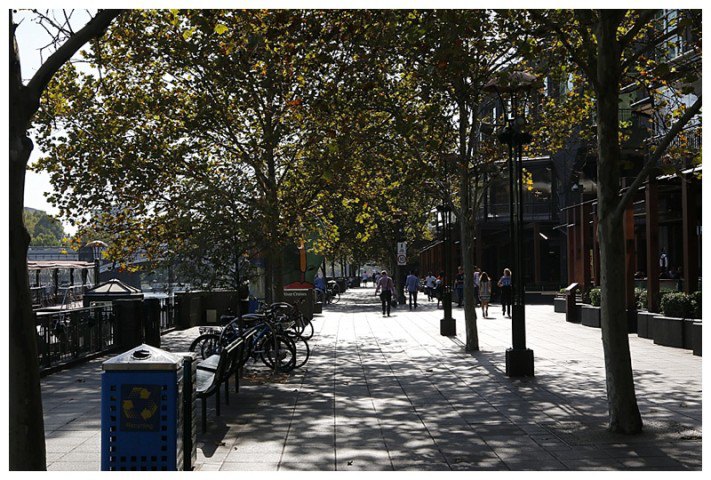
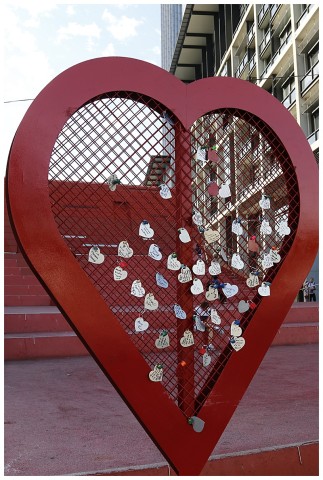
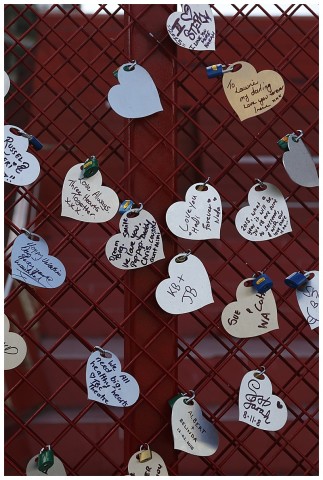
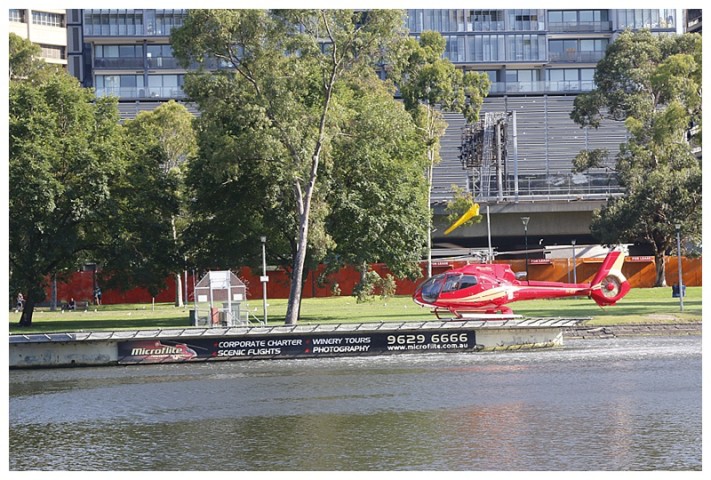
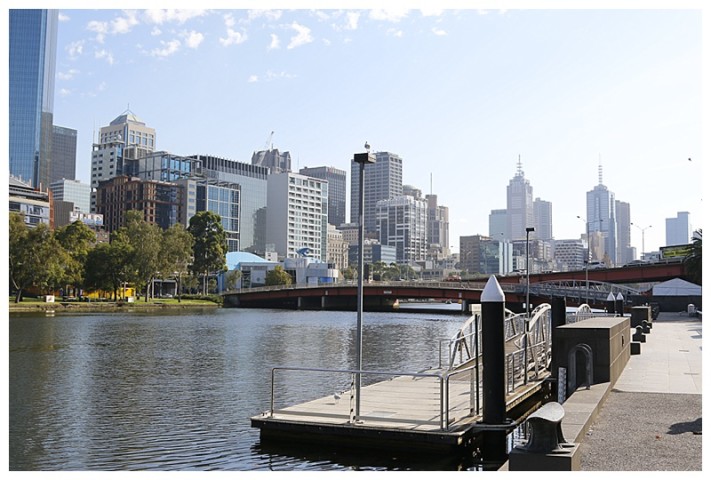
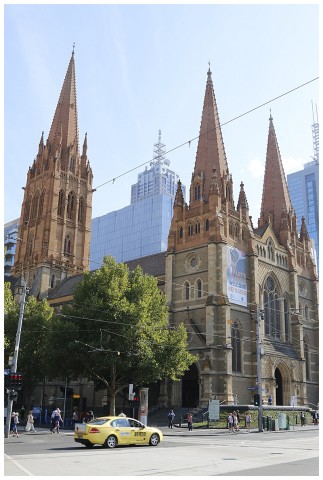
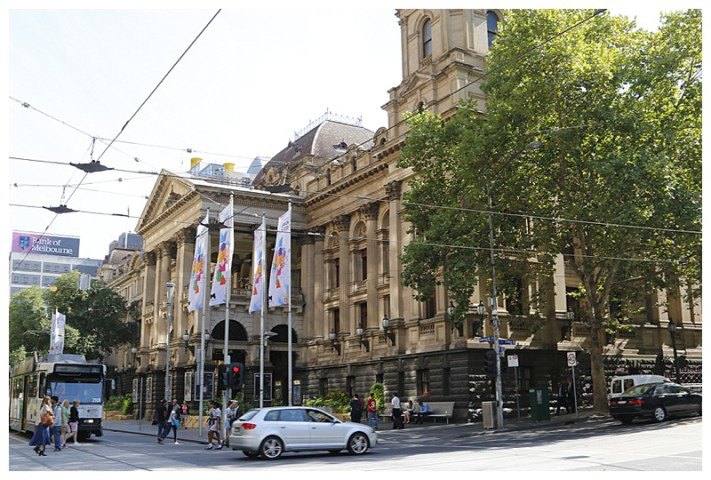
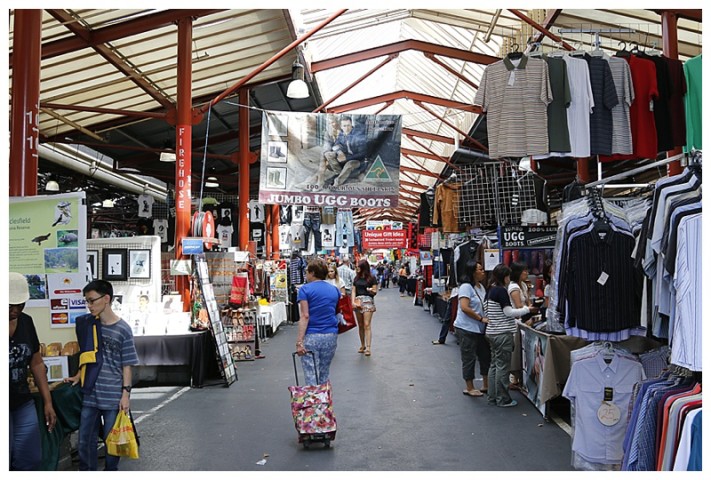
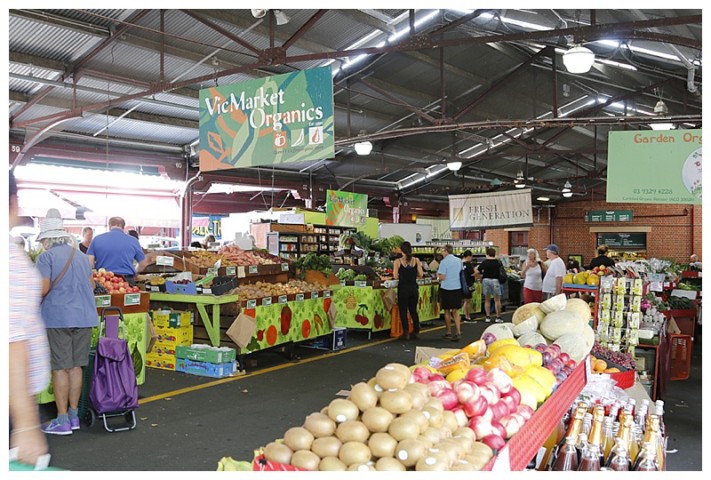
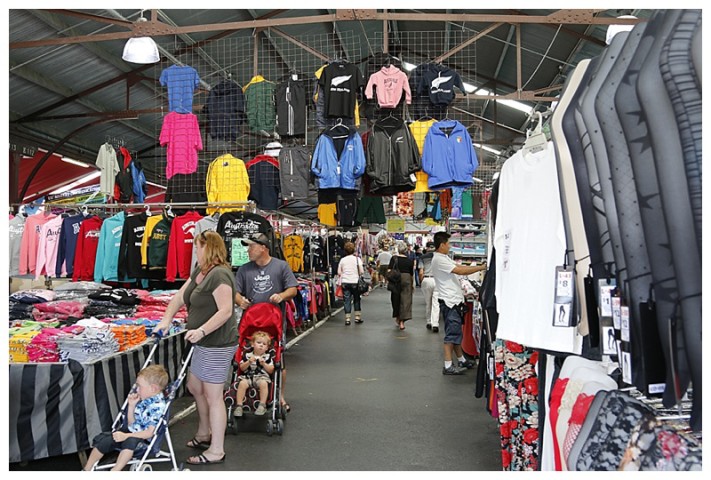
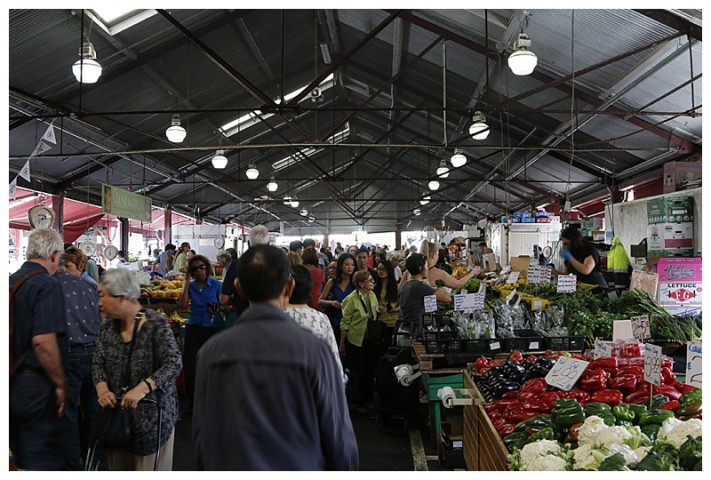
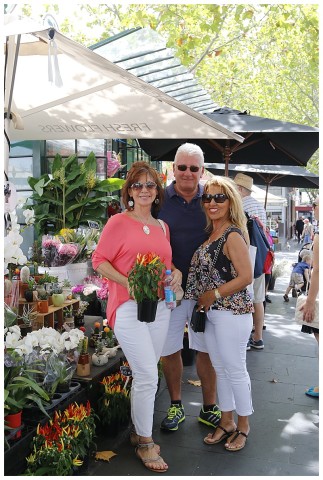
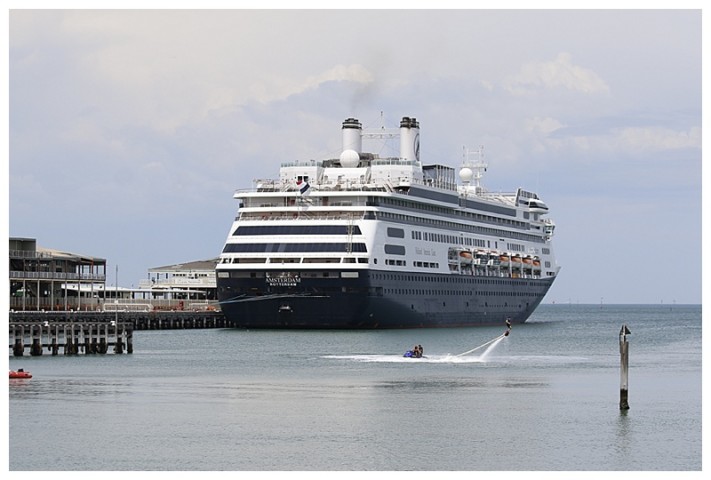
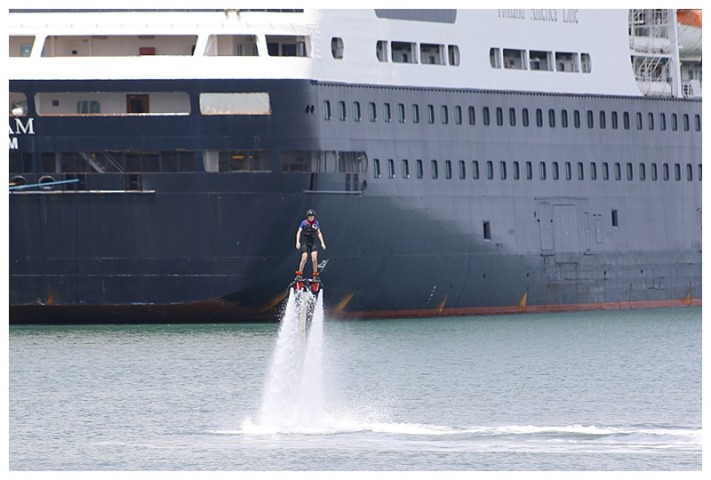

Captain, I say you earned your billet based on your preparations and execution of the departure. The Amsterdam is a capable ship with a capable captain. We sailed the 2012 GW and 2014 GW and always had confidence in your seamanship. Thank you.
Captain Jonathan,
Thanks for for your descriptive post with great photos of you and Karen. Glad your departure went well. Cheers!
I agree with Marie. I have never heard our tram being referred to as a “trolley” either. However I think the tram that goes to Port Melbourne might be the tram that is also a “light rail”
Love the way you tell a story and appreciate our lovely city of Melbourne. Just for your interest we call the trams trams not trolleys.
Thank you Marie, I’m glad you’ve cleared that up, I was getting quite confused
Wow, I was holding my breath as I read your passage. Great job Captain. Thanks for the pictures, we had the pleasure of sailing into Melbourne, we loved the city and the ambassador’s of the city who were so helpful.
Thanks for taking the time – pictures are fantastic!